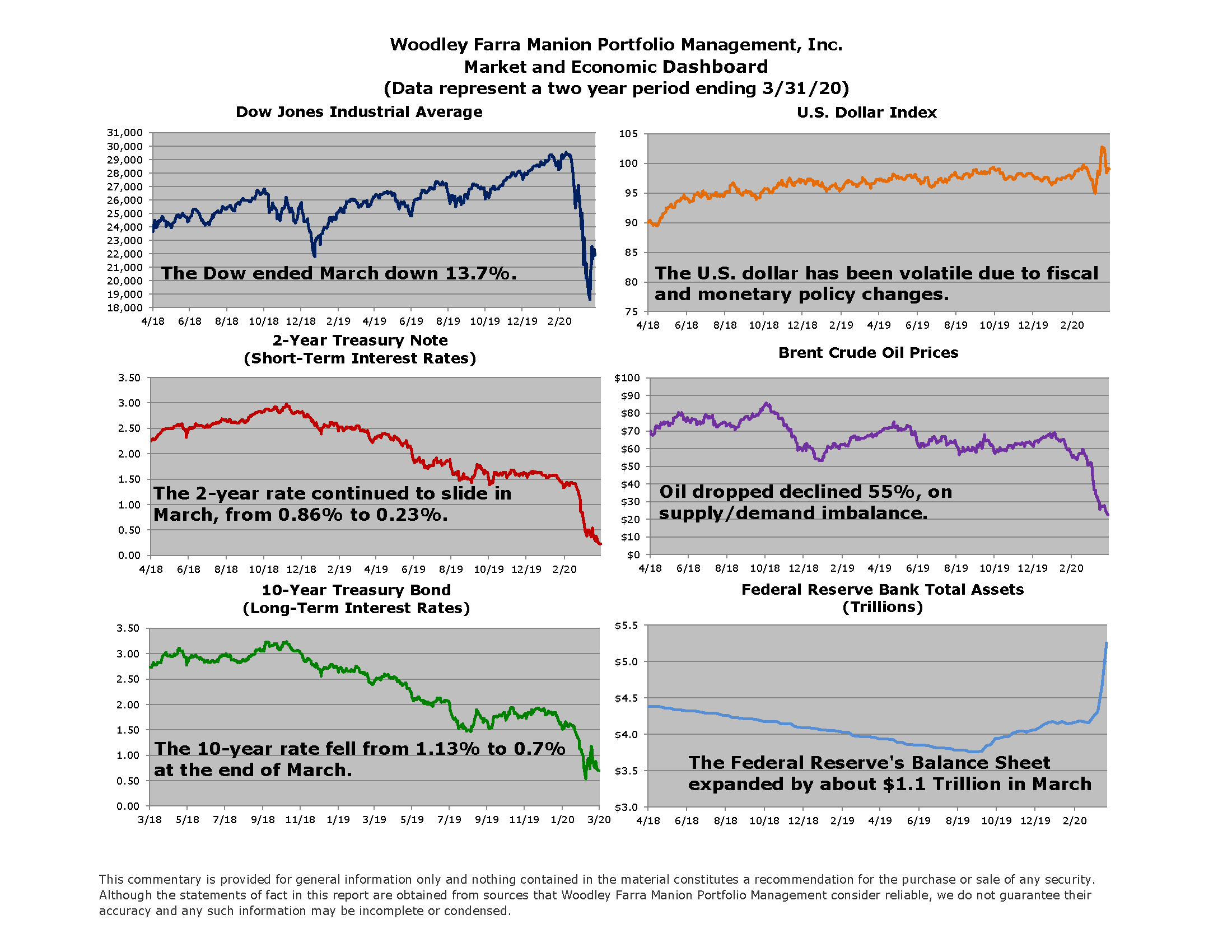
The eleven-year US bull market ended abruptly in March, yet another victim of the novel coronavirus. The US has responded with two significant steps: Congress has passed a $2.2 trillion stimulus package (equal to 10% of the economy) and the Federal Reserve has made up to $4 trillion (18% of the economy) in liquidity to the financial markets.
State-mandated social distancing steps are creating the first recession by “proclamation,” the intentional slowdown of the economy to give the healthcare system time to absorb the onslaught of new patients. The key questions yet to be answered include: 1) when can most people go back to work, 2) how deep and long will the recession last and 3) when will the financial markets bottom and head higher?
The president has extended the social distancing guidelines to April 30, with the hope the peak in virus cases occurs sometime in mid-April. We anticipate every state to relax these guidelines based on their unique circumstances.
Regarding the depth and length of a recession, we believe the new stimulus package is the first of several that will eventually be passed. The plan is designed to get cash in the hands of virtually every worker and employer in the country. It also lengthens and increases the amount of unemployment payments to the newly unemployed. Banks are encouraged to lend to their customers most directly affected by the shutdowns, notably restaurants and other leisure industries.
It is important to note that the looming recession will be “event driven” as opposed to a recession caused by the economic cycle or a financial bubble. The economy was in great shape before the virus struck. As a result of the quick actions described above, the recession could be a short albeit very painful one.
Stocks were at an all-time high on February 19 and entered a bear market 15 days later (down 20%) the fastest drop to a bear market in history. Eight days later stocks were 35% below the recent high, before finally rallying for a few days. There were no signs on February 19 a bear market was about to start. There were not any signs of a recession and unemployment was 3.5%. Given the strong conditions present before the virus arrived and the tremendous government response, we anticipate a solid economic and market recovery later this year.
Finally, we are very grateful for all the calls and emails of support from so many clients. Thank you for your trust and confidence in our firm, we will defeat the virus soon!
-George S. Farra, CFA
